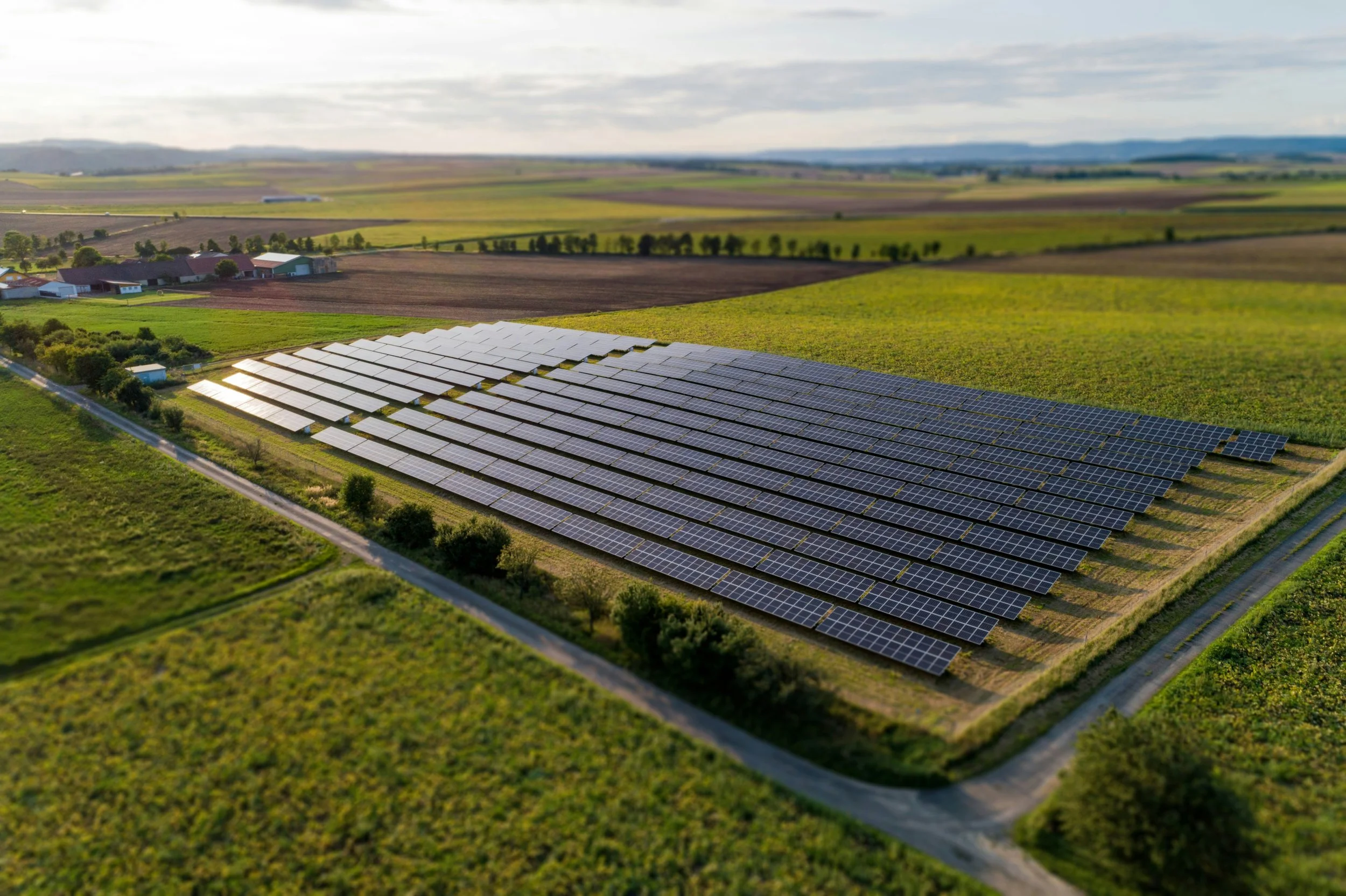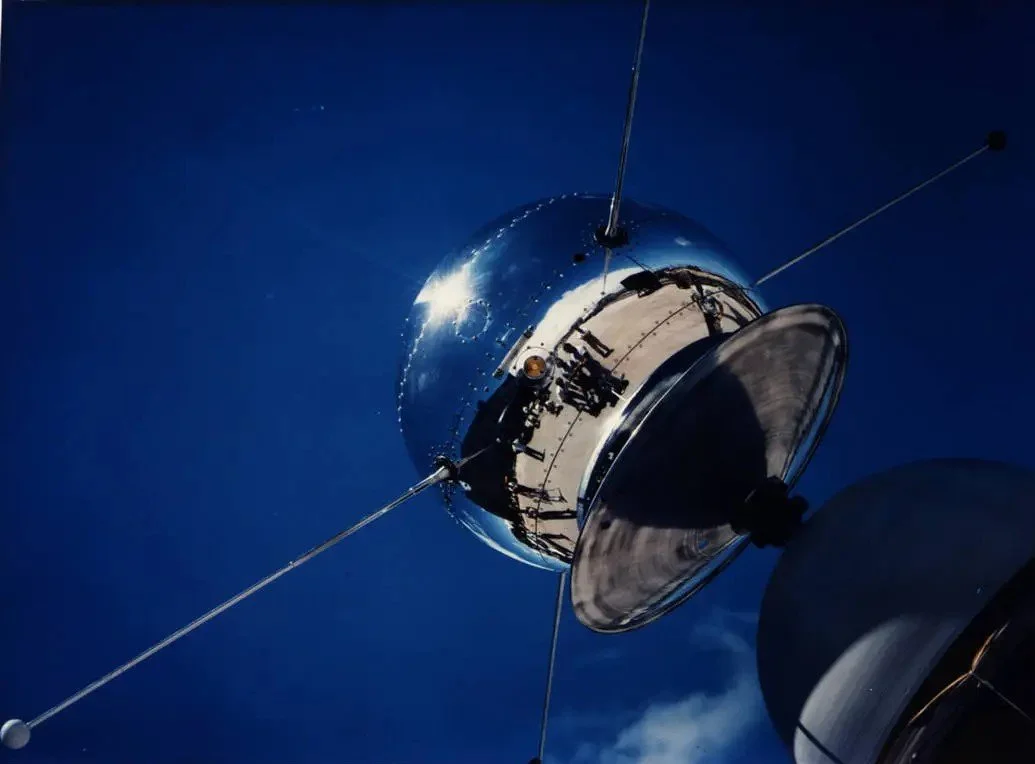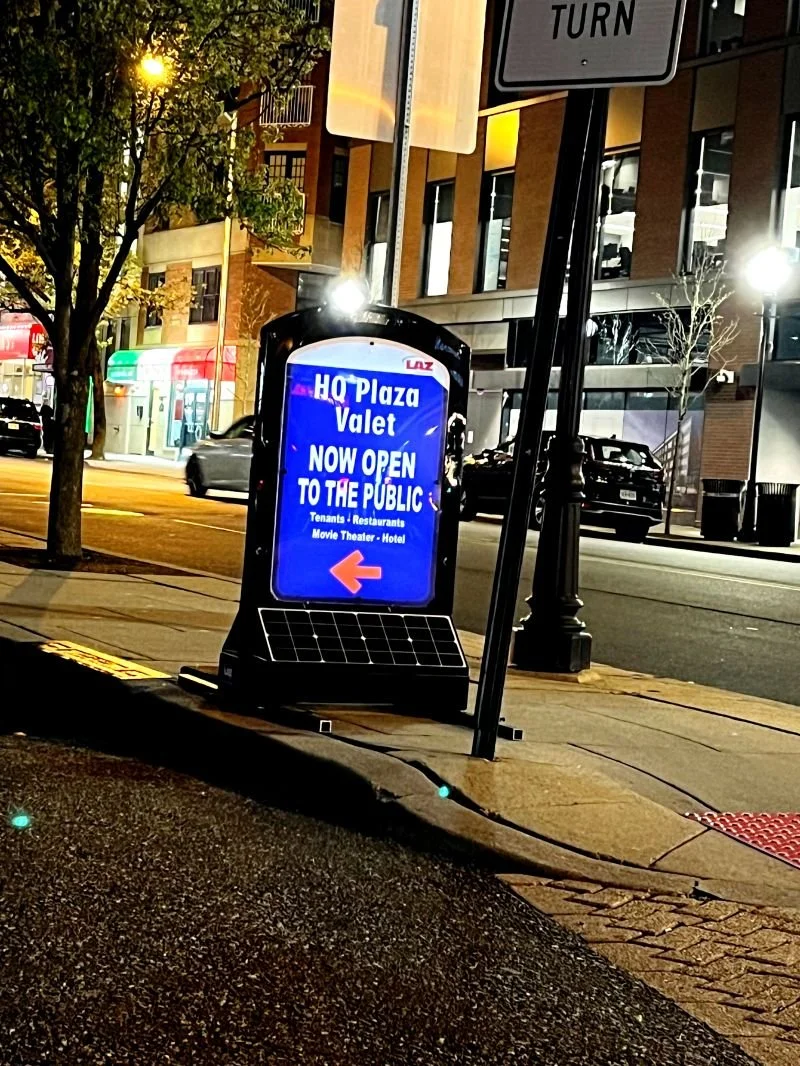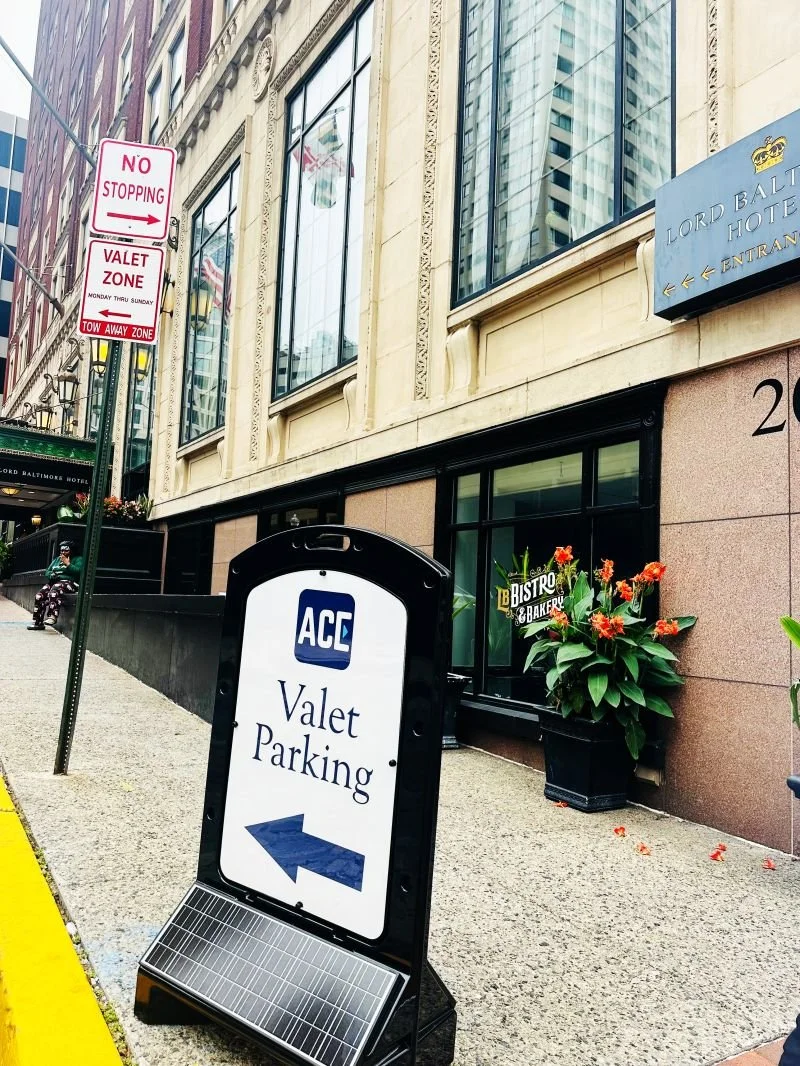From Sunlight to Signage
The Evolution of Solar Power and How It’s Transforming Business Visibility
This is a solar power plant in the Waldviertel / Austria.
Solar energy has become one of the most promising and practical power sources of the modern age, offering clean, renewable electricity to everything from residential rooftops to commercial signage. But its journey didn’t begin with solar panels on buildings or signs lighting up sidewalks. The use of solar power dates as far back as the 7th century BC, when humans used magnifying glasses to concentrate the sun’s rays and start fires (U.S. Department of Energy, Timeline of Solar Energy).
Passive Solar in Ancient Times
As early as the 3rd century BC, the Greeks and Romans were already tapping into the power of the sun, not with machines, but with architecture.
They built their homes and bathhouses to face the south, maximizing sunlight during winter months. Materials like stone and clay were used to absorb heat during the day and release it at night, keeping spaces warm with no fire or electricity.
They strategically oriented buildings, especially public baths, so that large south-facing windows and open courtyards captured maximum sunlight. The thick stone walls and floors acted as thermal mass, absorbing solar heat during the day and releasing it gradually, helping to warm interior spaces with minimal fuel use. The hypocaust system further complemented this by channeling hot air beneath floors and through wall flues, enhancing radiant heating where sunlight fell short.
So, What’s the Connection?
While passive solar and solar panels may seem worlds apart, they’re actually two chapters in the same story:
| Passive Solar Design | Solar Panels |
|---|---|
| Uses the sun's heat | Converts sunlight into electricity |
| Relies on architecture | Relies on technology |
| Ideal for heating | Ideal for powering devices |
| Used since ancient times | Developed in the 20th century |
Alexandre Edmond Becquerel
Fast forward to 1839, and French physicist Alexandre Edmond Becquerel made a groundbreaking discovery in a small laboratory at just 19 years old. While experimenting with metal electrodes in an electrolyte solution, he observed that exposure to light could generate an electric current, a phenomenon now known as the photovoltaic effect. This discovery laid the scientific foundation for modern solar energy technology, proving that sunlight could be directly converted into electricity without any moving parts or mechanical systems. Although it would take over a century for this principle to become commercially viable, Becquerel's insight was the first crucial step toward the solar panels we use today.
It wasn't until 1954, however, that Bell Labs developed the first silicon solar cell capable of converting sunlight into usable electric power (National Renewable Energy Laboratory).
Today, what was once a scientific marvel is now a practical tool for business owners. With advancements in solar panel efficiency, battery storage, and off-grid lighting systems, solar-powered signage is not just possible; it’s an increasingly popular solution for businesses seeking to enhance visibility, cut energy costs, and demonstrate environmental responsibility.
Solar's Early Progress: From Space to Suburbia
In its early days, solar power was expensive and primarily used in niche industries. One of the first large-scale applications? The space industry. During the 1950s and 60s, NASA used solar panels to power satellites, proving that solar could deliver consistent, off-grid energy even in space.
As technology improved and costs began to fall, solar panels made their way from spacecraft to rooftops. By the 1970s, governments began investing in solar research, spurring early adoption for residential and rural electrification.
As technology improved and costs began to fall, solar panels made their way from spacecraft to rooftops. By the 1970s, governments began investing in solar research, spurring early adoption for residential and rural electrification.
First Movers: Which Industries Used Solar First and Why?

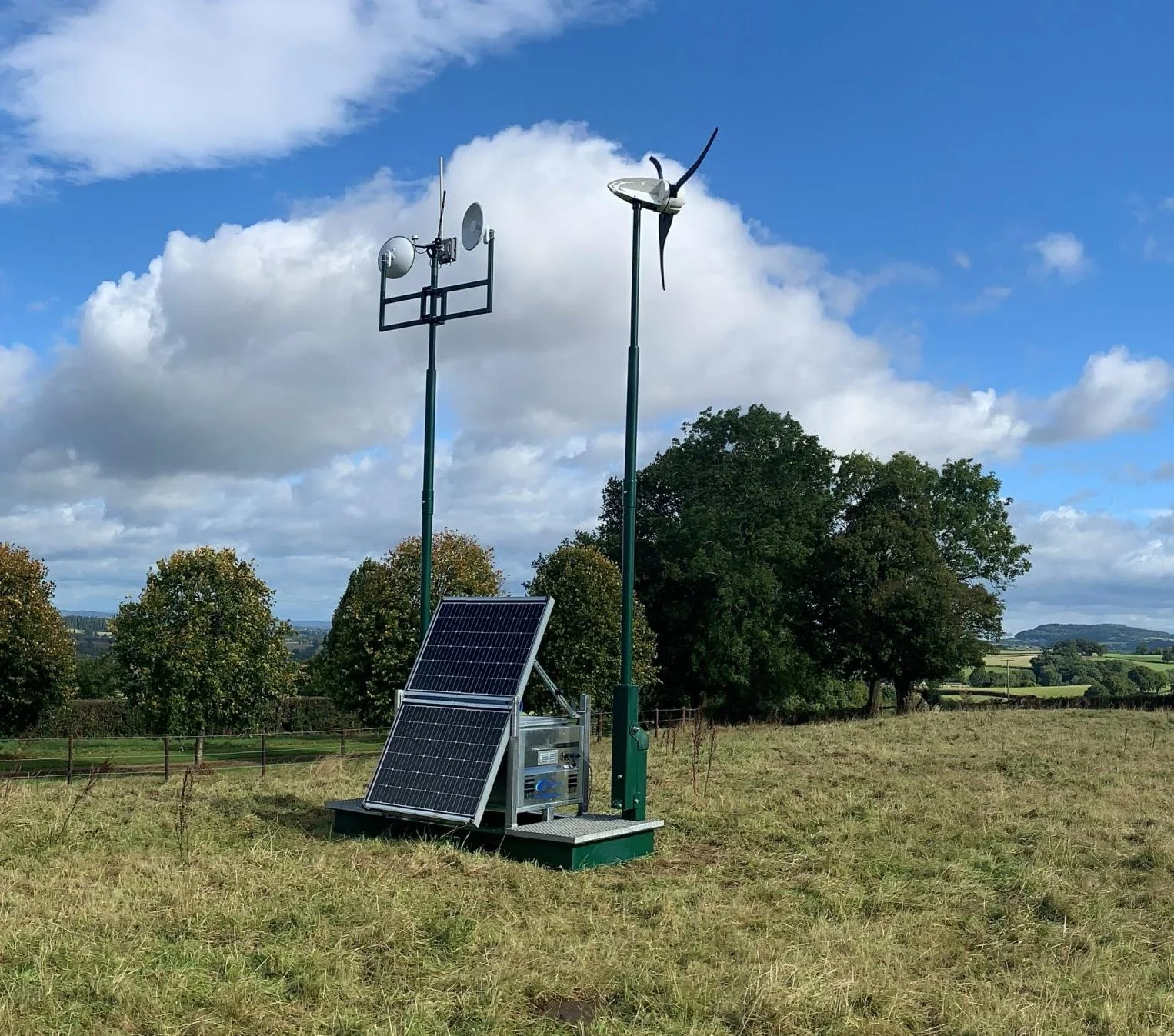


Farms and remote towers were early adopters of solar because of off-grid needs
Outside of aerospace, telecommunications and agriculture were among the first industries to embrace solar power. Remote communication towers, irrigation systems, and off-grid farms benefited from solar's independence from traditional utilities.
These early adopters chose solar for one simple reason: location. In remote or undeveloped areas, running traditional power lines was costly if not impossible. Solar offered a clean, low-maintenance alternative that quickly proved its worth.
Fast Forward: Solar Moves Into the Business World
Today, solar energy is no longer just for suburban homes or rural properties. It’s become a strategic asset for businesses of all sizes. From restaurants looking to reduce their energy bills to hotels and retailers seeking sustainability certifications, companies are turning to solar to:
Cut operational costs
Meet environmental, social, and governance (ESG) goals
Stand out with eco-conscious branding
Gain independence from volatile energy markets
According to the Solar Energy Industries Association (SEIA), the U.S. commercial sector installed 1.9 gigawatts (GWdc) of solar capacity in 2023 — a 19% increase from the previous year. That kind of growth shows that solar is no longer seen as an add-on, but as a smart investment with real returns.
| Metric | 2022 | 2023 | Year‑Over‑Year Growth |
|---|---|---|---|
| Commercial solar added (GWdc) | ~1.6 GWdc* | ~1.9 GWdc | +19% increase (SEIA, The Department of Energy's Energy.gov) |
In fact, according to SEIA (Solar Energy Industries Association), the commercial sector added over 3.4 gigawatts of solar capacity in 2023 alone, a sign that more and more businesses see solar not just as a utility option but as a competitive advantage.
One standout application? Solar-powered signage, like SunSign.
One innovative example is SunSign, a solar-powered signage solution that helps businesses stay visible at night without relying on the grid. Whether it's guiding customers in a parking lot, branding a poolside lounge, or highlighting an entryway. SunSign combines clean energy with practical visibility, making it perfect for companies that want to enhance their image while reducing power costs.
How Solar Came to Signage: A Smart New Frontier
As solar panels became smaller, more efficient, and more affordable, businesses started looking beyond rooftops and began applying solar where it hadn’t been before. That’s where signage came in.
Traditional signs often require electricity, trenching, and costly permits, especially for sidewalk or freestanding signs. But with the rise of solar-powered signage, brands found a cleaner, faster, and more affordable alternative, particularly for:
Sidewalks
Patios
Parking lots
Pop-up events and outdoor activations
The Takeaway: Solar Has Evolved — and So Should Your Business
From powering satellites in the 1960s to lighting storefronts and sidewalks in 2025, solar energy has come a long way.
Today, solar isn’t just about saving energy, it’s about being seen.
Whether you're a restaurant trying to stand out after dark or a hotel aiming for sustainable branding, solar-powered signage helps you:
Lower electricity and trenching costs
Boost visibility and aesthetics
Align with eco-conscious business practices
And with tools like SunSign, you don’t have to choose between function and form. You get portable, solar-powered signage that works hard and shines bright without a plug or utility bill.
Want to Learn More?
As solar technology continues to evolve, tools like SunSign show how businesses can adapt in simple, practical ways, reducing energy use while staying visible and approachable.
If you're exploring how solar signage might fit into your space, whether for patios, parking areas, or storefronts, we’re happy to share what we’ve learned.
Reach out with questions
Take a look at examples
Learn how others are using it


